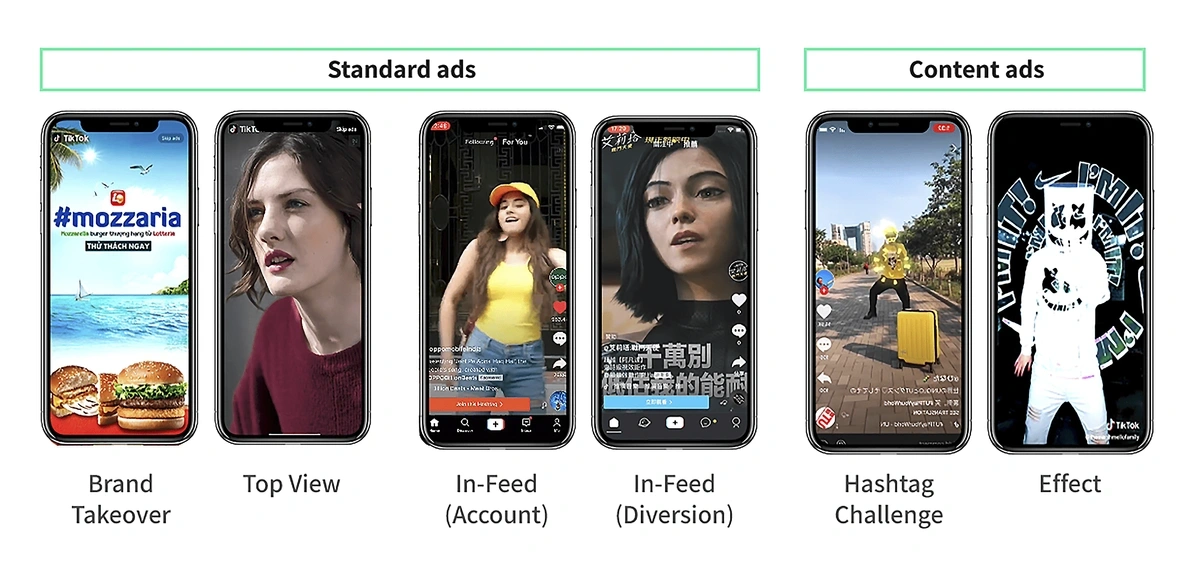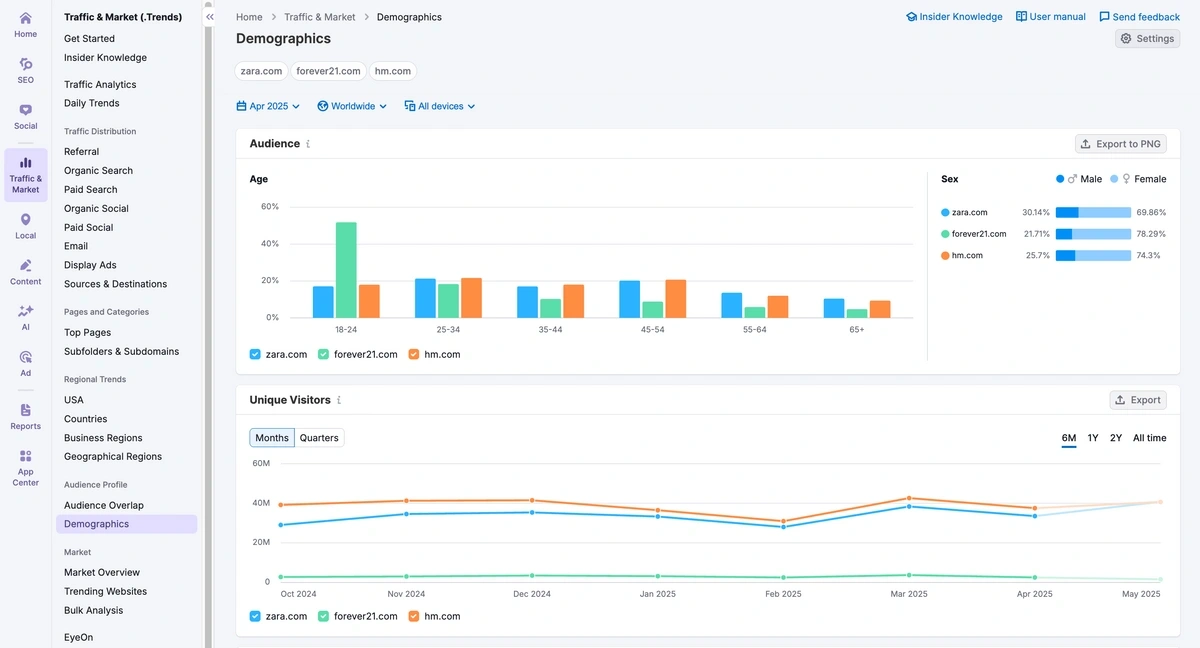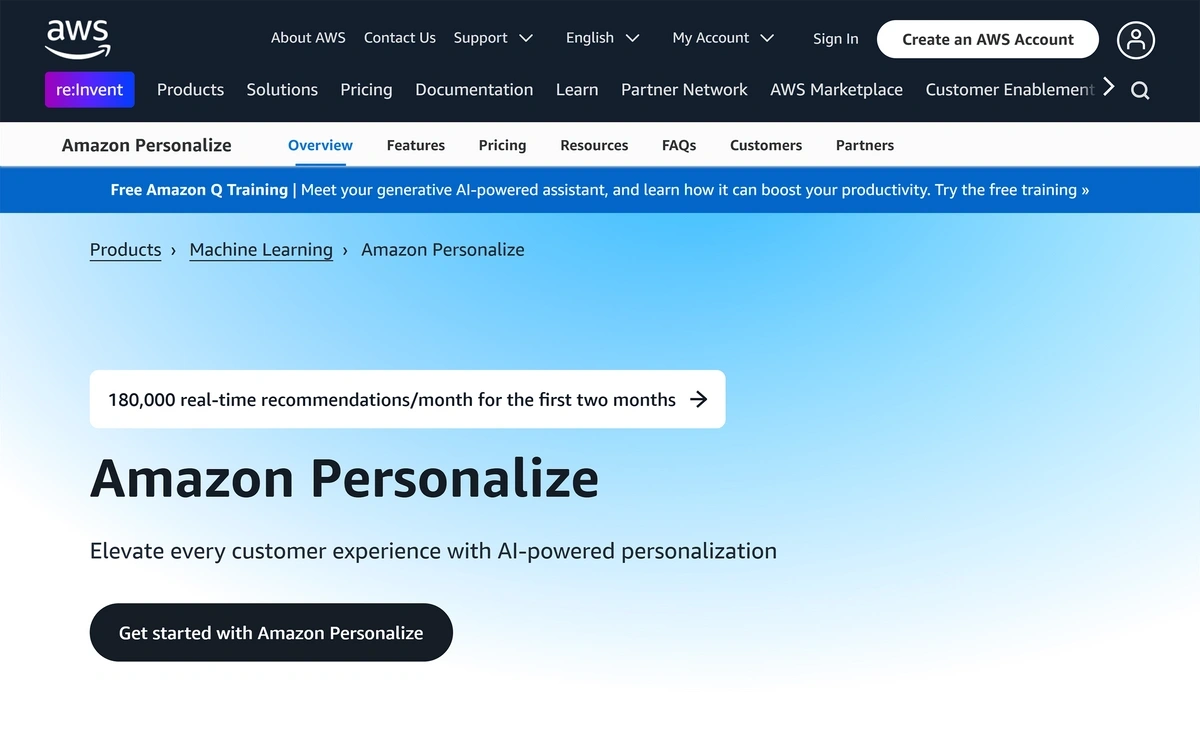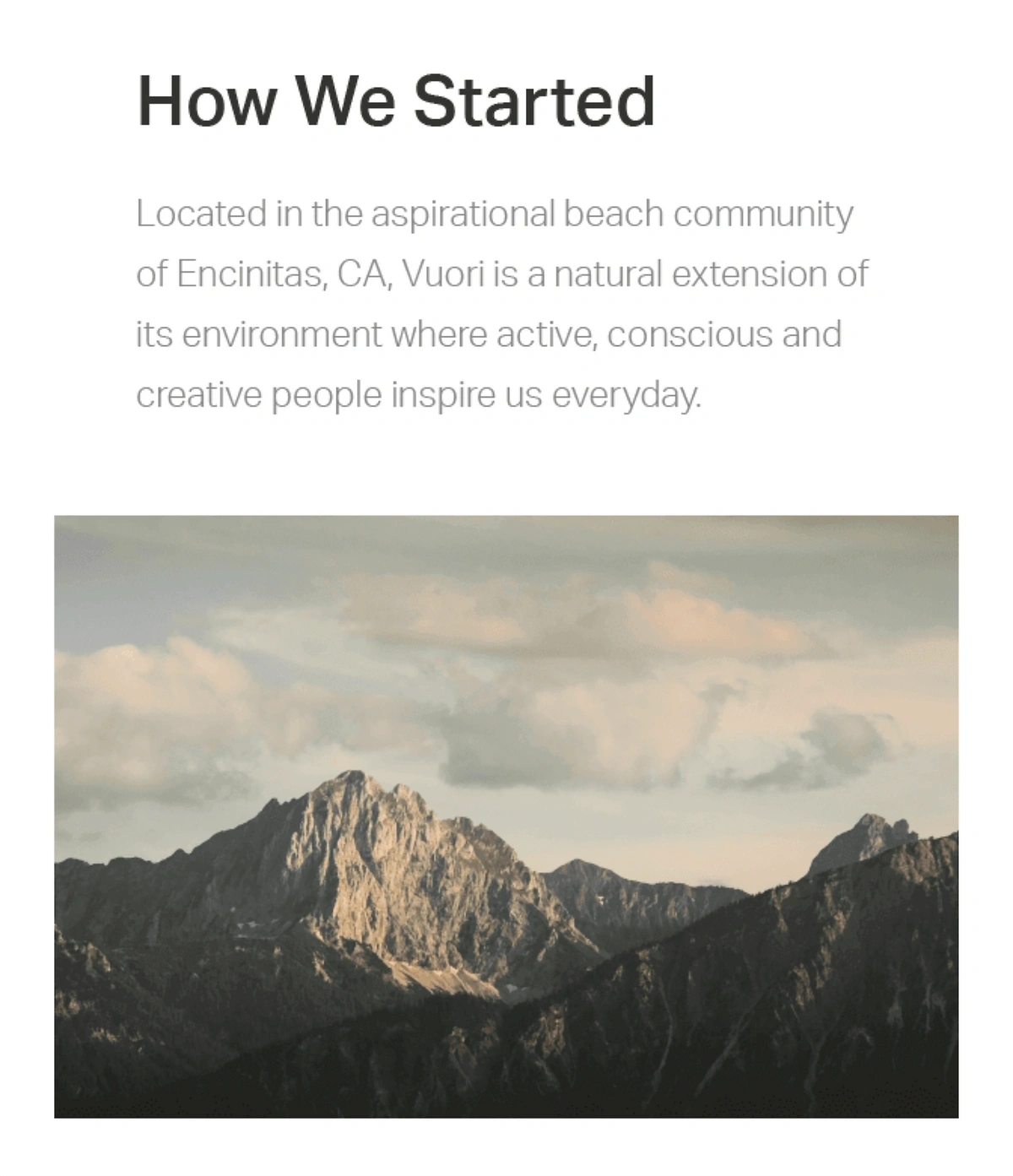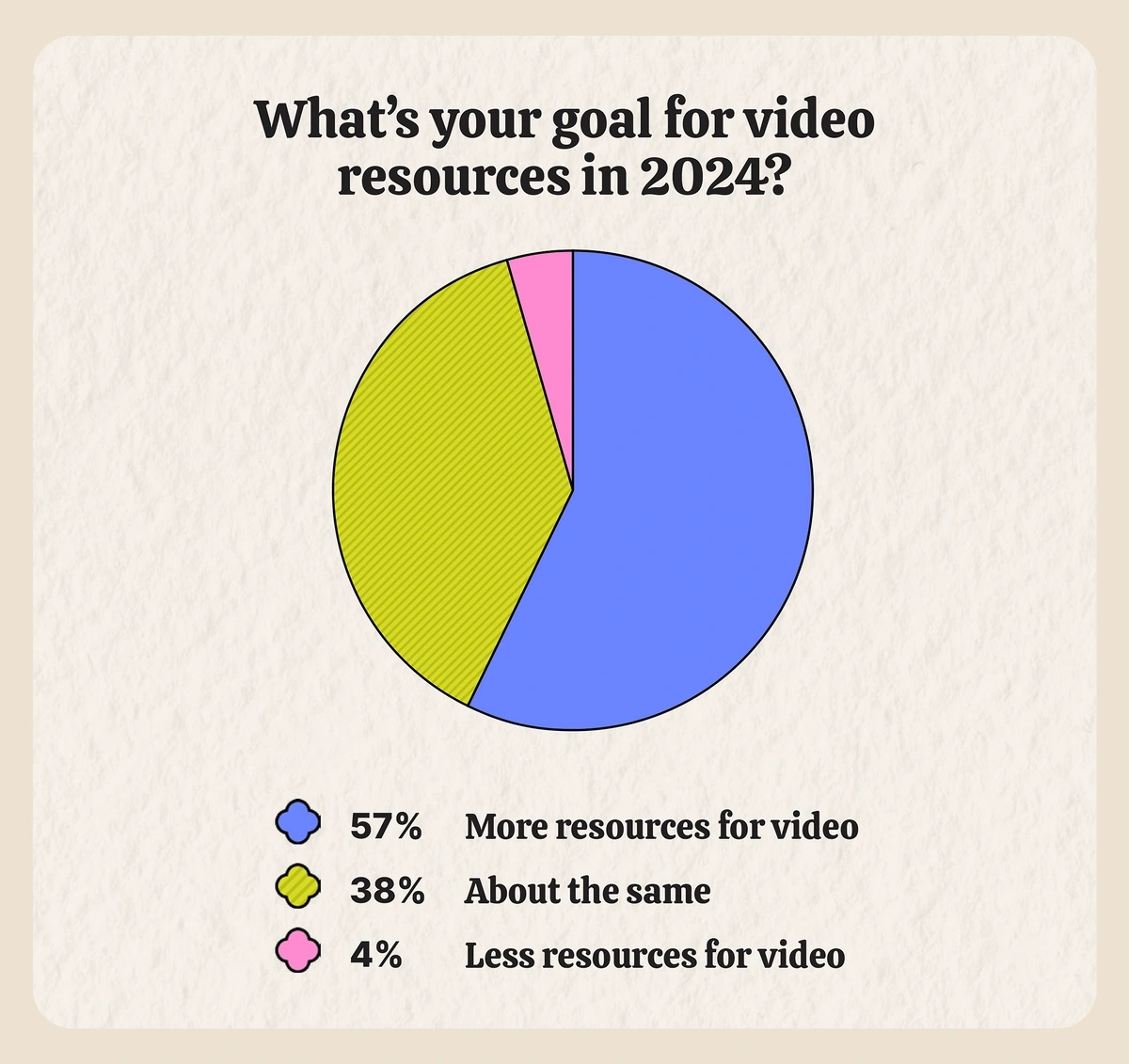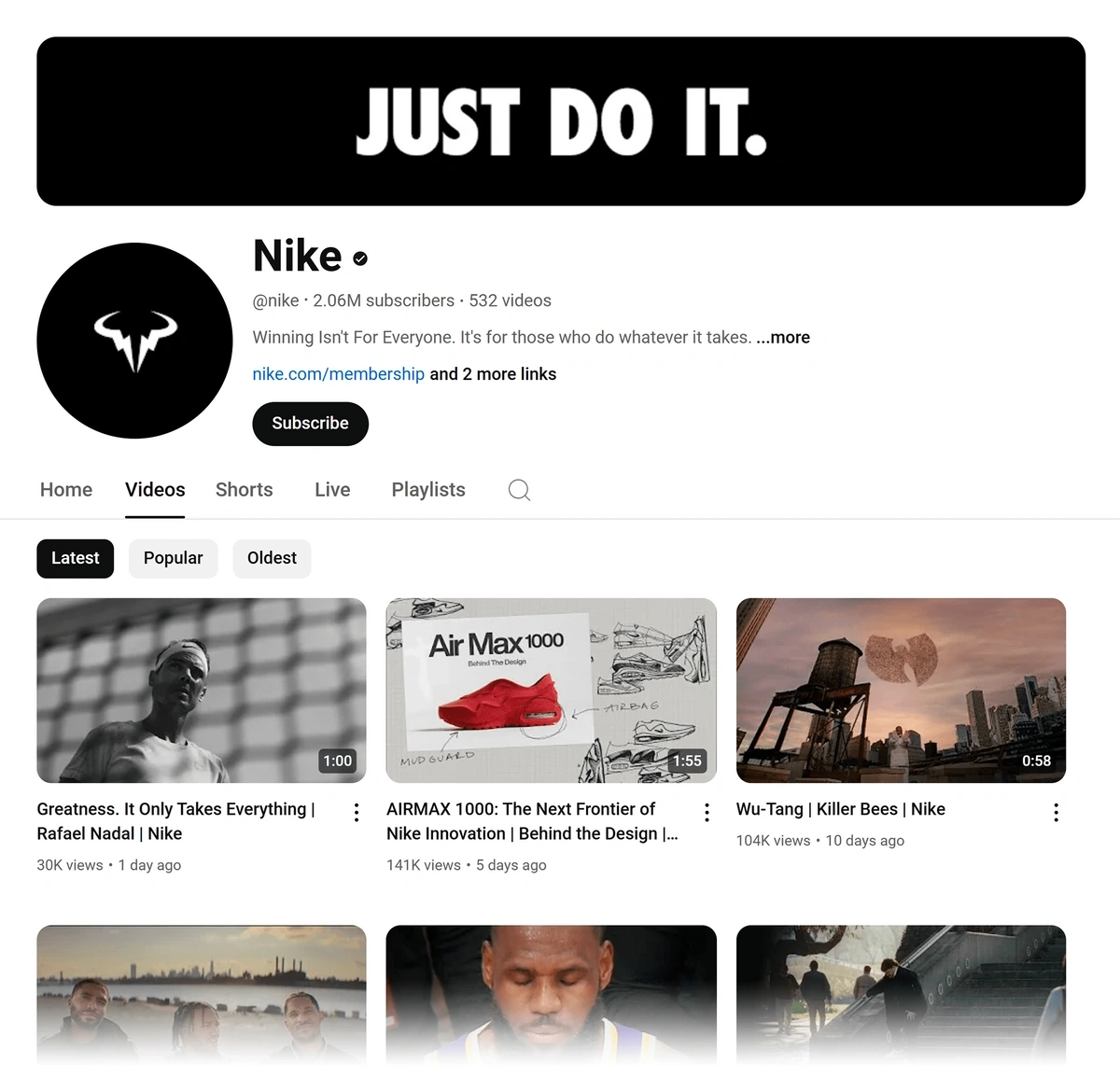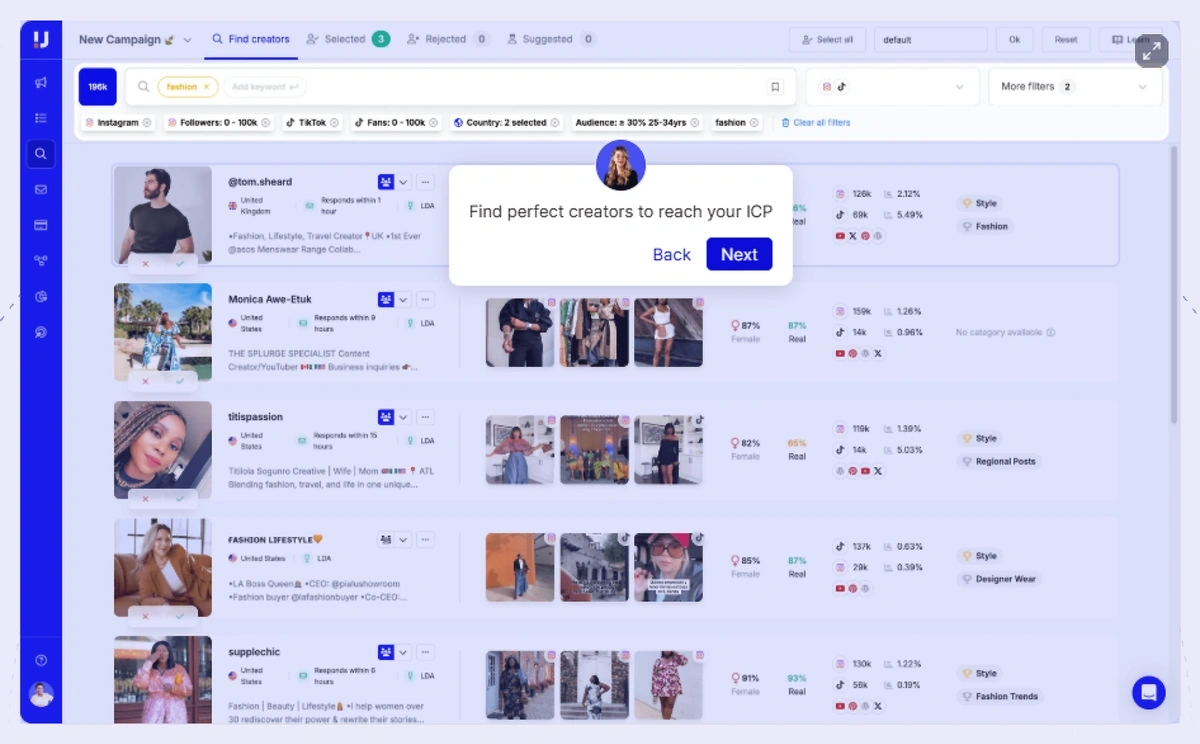
8 Key B2C Marketing Trends
You may also like:
This is our list of 8 important (and growing) B2C marketing trends happening right now.
In this post, we’ll cover:
- TikTok ads
- Social commerce
- Influencer marketing
- Video marketing
- Visual search
- And more
So, whether you’re in the fitness, home, nutrition, or lifestyle space, these trends are worth keeping an eye on.
Want to Spy on Your Competition?
Explore competitors’ website traffic stats, discover growth points, and expand your market share.
1. TikTok Ads Surge as Brands Meet Customers Where They're At
TikTok is one of the fastest-growing social networks on the planet.
Not surprisingly, marketers in the B2C space have taken notice.
Many have set up TikTok accounts themselves. And more and more brands are testing out TikTok’s advertising platform.
Searches for “TikTok ads” are up 755% in 5 years.
Even though TikTok ads are relatively new (personalized advertising did not begin until mid-2022), they offer a lot of the standard features you’d expect in a social ad platform.
For example, TikTok offers several placement options on the platform, like “TopView” and “Brand Takeover”.
Some of the campaign types available on TikTok’s ad platform.
Brands that advertise on TikTok are reaching a unique audience. 1 in 4 app users cannot be found on any other platforms.
It’s vital for B2C businesses to know where to find their customers. That’s the beauty of the Semrush Traffic & Market section.
Semrush Traffic & Market in use.
Traffic & Market is a treasure trove of audience segmentation data, allowing businesses to dive into various demographic data of their main competitors’ customers.
For brands whose audiences skew young, TikTok ads may well be a lucrative avenue. In the US, more than half of all users are aged between 18 and 34.
But Traffic & Market takes out any guesswork, showing B2C businesses exactly where they need to focus advertising budgets.
2. Social Commerce Arrives in a Big Way
Southeast Asia has taken the lead on social media shopping in recent years. But it is definitely arriving in the West.
By the end of last year, more than 500,000 merchants were selling to US consumers through TikTok Shop.
“TikTok Shop” searches have seen steep growth since the platform was launched.
And according to Bloomberg, TikTok expects US commerce sales to increase 10x this year.
Already, more than 1 in 10 US households have made a TikTok shop purchase.
It’s more important than ever for B2C businesses to know where their customers are. Should they be setting up a TikTok Shop? Or looking into Instagram Checkout?
Right now, TikTok does seem to be dominating the nascent social commerce space. As of February, it accounted for more than two-thirds of total social shopping gross merchandise value.
Any B2Cs targeting Gen Z (or even Gen Alpha) will likely want to look into selling on TikTok.
Build a winning strategy
Get a complete view of your competitors to anticipate trends and lead your market
3. Influencer Marketing Goes Niche
Businesses spend more than $8 billion per year on influencer marketing, according to industry research published by Business Insider.
Getting influencers to mention your product on social media is suddenly fairly expensive.
In fact, 14.5% of brands now have an influencer marketing budget in excess of $500,000 per year.
But going in the other direction, plenty of businesses are more or less exiting the traditional influencer marketing space. 47.4% plan to spend less than $10k on influencers this year.
Many B2C brands are turning to “micro-influencers”.
Searches for “micro influencers” are up 35% in the last 5 years.
Micro-influencers are social media accounts with relatively few followers (approximately 5,000 to 100,000).
Although they may not have the reach of a true influencer, they’re significantly cheaper to work with. And they often have loyal, engaged followers.
On Instagram, micro-influencers average a 6% engagement rate. Mega-influencers (500,000 to 5 million followers) average 1.97%.
That being said, even micro-influencers aren't necessarily the bargain they once were.
So some brands are starting to target so-called “nano-influencers”.
Interest in "nano influencers" has grown 78% in 5 years.
Nano-influencers are those with up to around 5,000 followers.
Again, a single influencer marketing campaign with a nano-influencer probably won’t move the needle.
But combining several of them can often lead to better results vs. a single sponsored post on a highly influential account.
2024 has seen something of a resurgence in the use of mega-influencers and bona fide celebrities. But micro-influencers and macro-influencers (100,000 to 500,000 followers) are the ones most influencer marketers plan to work with this year, ahead of the bigger names.
4. More B2C Companies Implement Personalization
Personalization is becoming a key part of any B2C marketing campaign.
“Personalized content” searches are up 300% in the last 5 years.
Especially for E-commerce sites.
In fact, more than 8 in 10 consumers prefer companies that offer a personalized experience.
Personalization boosting conversions is partly why email marketing platforms and CRMs that focus on personalization, like Drip, have seen rapid growth.
Search interest in "Drip" has grown 163% over 10 years.
Drip delivers an average single-email campaign open rate of 51%, as well as a 68% repeat purchase rate.
Personalization at scale has become far more possible in the age of AI.
Searches for “AI personalization” are up 1,500% in the past 5 years.
AI presents its own challenges — the sheer volume of content that can be created with minimal effort lends itself to spamming, which is far from best practice when it comes to personalization.
But at the same time, businesses cannot afford to ignore the opportunities presented by the technology.
Ticketek is one of the brands to have used Amazon Personalize, an AI-driven content personalization service.
Amazon Web Services offers an AI personalization tool.
It has seen purchase rates improve by more than 200%, with tickets sold per opened newsletter up by 49%.
5. Email Marketing Makes a Serious Comeback
With social media's organic reach significantly lower than a few years back, many B2C companies are revisiting email.
In fact, email is the most common medium for executing B2C customer engagement strategies.
And more than three in four marketers (76%) consider email to be among the most effective B2C marketing channels.
For example, Vuori uses email as an important marketing tool.
“Vuori” searches are up 650% in the last 5 years.
The athletic apparel brand incorporates storytelling into its welcome email. That’s more important than ever, with 84% of consumers wanting to buy from brands to which they feel an emotional connection.
Vuori’s welcome message has been hailed as a strong example of email marketing.
Two fast-growing email marketing platforms illustrate email’s huge comeback in the B2C world.
The first is Flodesk. It’s an email marketing platform that was founded specifically with E-commerce in mind.
"Flodesk" searches are up 176% in 5 years.
Today, it has 80,000 subscribers and generates nearly $27 million in annual revenue.
There’s also ConvertKit (recently rebranded to just Kit), a super fast-growing email service provider for online creators.
It generates monthly recurring revenue of over $3.5 million.
6. B2C Businesses Invest More in Video Content
According to a survey conducted by Wistia, 93% of businesses already use video as an important part of their marketing strategy.
But what’s even more interesting is that 96% of businesses that already use video plan to spend the same or more of their content marketing budget on video moving forward.
According to one industry survey, almost all businesses that currently invest in video content plan on continuing with it.
The same survey also found that 40% of businesses had only been making videos for the past 2-5 years — more or less in line with the growth of TikTok.
“TikTok” searches are up 171% in 5 years.
Sure enough, brands are now posting 3-5 videos per week on social media. However, most companies are still making videos primarily for their websites or for customer emails.
How B2C marketers capitalize on this trend depends a lot on the platform where their customers are online (another use case for Traffic & Market).
For example, fitness companies might be well served by investing in an active YouTube channel.
Nike keeps an active YouTube page, which has over 2 million subscribers.
And businesses in the travel space could do well with videos designed specifically for Instagram or TikTok.
7. Visual Search Continues to Grow
Google says that its Lens search feature is used for nearly 20 billion visual searches every month.
Searches for “Google Lens” are up 207% in 5 years.
That’s an impressive number. Even for Google. And it says that Lens queries are among the fastest-growing search types, with users aged 18-24 engaging the most.
That said, Pinterest has made visual search a part of its platform for years.
Searches for “Pinterest Lens” are up 259% in 5 years.
And it has continued to refine the tool and add new features. Now, when you search with a picture, you’re presented with two tabs: “Explore” and “Shop”.
Some have predicted that Pinterest could be uniquely placed in the race to capture the social commerce market, which is expected to be worth over $1 trillion globally by 2028.
B2C businesses need to start thinking about visual search optimization.
The good thing is that lots of the best practices will only serve to make a website more visually appealing to consumers anyway.
While on the technical side, it’s important to be properly tagging images and ensuring that formatting is correct across multiple device types.
8. Influencer Search Engines Come to Market
The early days of influencer marketing were very ad hoc. You’d find someone influential on a social network. Email them a pitch. And you’d negotiate a rate.
That sort of back-and-forth still exists, of course.
But the process for finding influencers is getting streamlined.
That’s thanks to platforms like Upfluence.
“Upfluence” searches are up 143% in the last 5 years.
This influencer search engine makes it relatively easy to find influencers that cover your topic on your chosen platforms.
Fashion influencer search results from Upfluence.
You can filter by audience size, making it easier to find those micro-influencers and nano-influencers.
Some of these influencer marketing platforms even have features for contacting and closing deals with influencers.
Editor’s Tip: Watch Out for Tech Trends
That’s it for our overview of the biggest B2C trends happening right now.
What’s interesting about these trends is that they’re not all driven by cutting-edge technology (although some, like visual search and social commerce, are).
For example, email marketing and online video remain important channels. But neither one is necessarily new.
And it will be interesting to see how the new and old tech complement and compete with each other in the coming years.
Stop Guessing, Start Growing 🚀
Use real-time topic data to create content that resonates and brings results.
Exploding Topics is owned by Semrush. Our mission is to provide accurate data and expert insights on emerging trends. Unless otherwise noted, this page’s content was written by either an employee or a paid contractor of Semrush Inc.
Share
Newsletter Signup
By clicking “Subscribe” you agree to Semrush Privacy Policy and consent to Semrush using your contact data for newsletter purposes
Written By


James is a Journalist at Exploding Topics. After graduating from the University of Oxford with a degree in Law, he completed a... Read more


